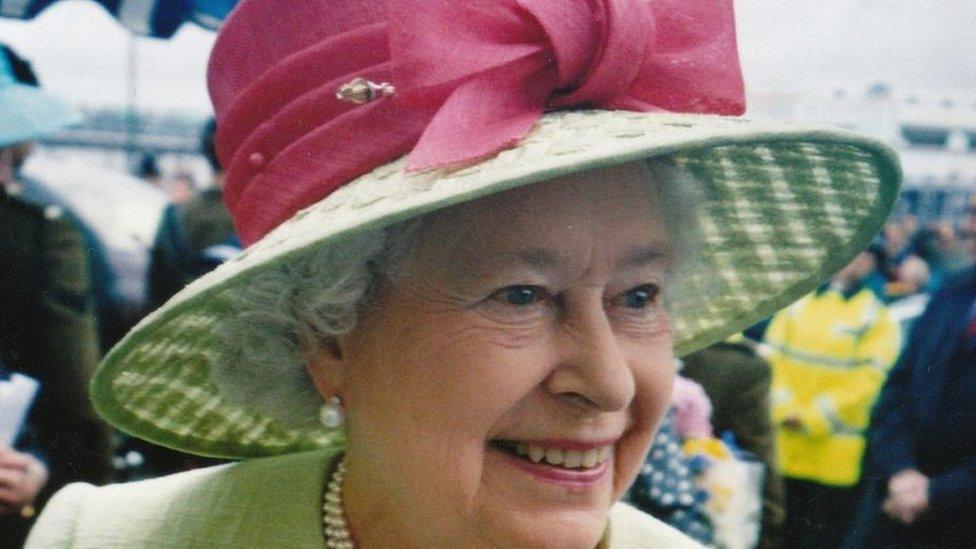Aberystwyth: Twenty-five years since protest halted royal visit
- Published
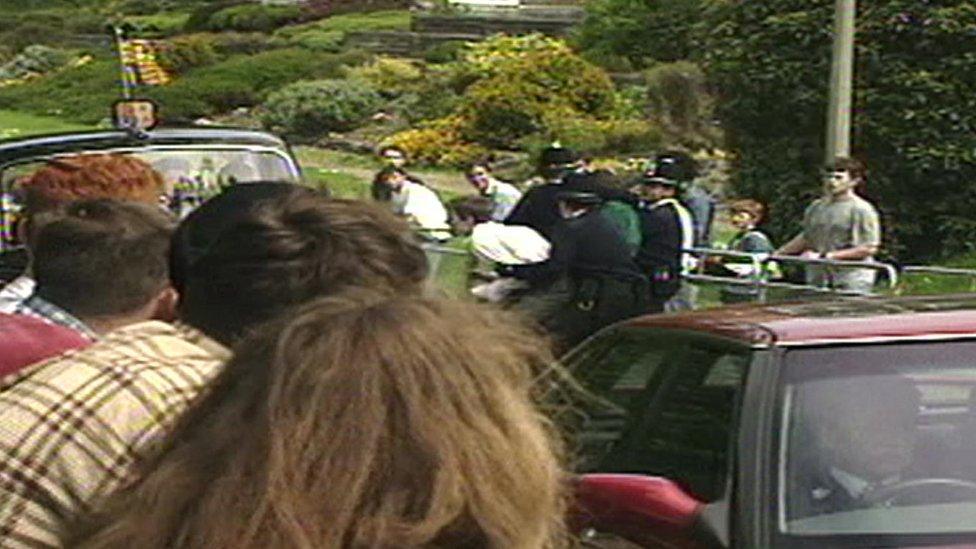
Police grabbed a man as he tried to run in front of the Queen's car, which swerved
A Queen's visit has only been stopped once on mainland Britain - 25 years ago today when students stopped her completing a visit to Aberystwyth.
On the final day of May 1996, hundreds of university students gathered outside Pantycelyn Hall to oppose an invitation given to the Queen to open an extension to the National Library.
The protesters thought someone from Wales, perhaps an author or other cultural figure, should have been opening the extension.
As the Queen's car approached the crowds, there were both boos and chants of God Save the Queen.
Two men jumped a barrier and one tried to run in front of the monarch's car, which swerved.
As the car passed the Queen continued waving to the crowd.

Journalist John Meredith said he knew there would be trouble at the event
John Meredith was the BBC Wales correspondent at the event. He said he expected trouble during the visit.
"I knew from the beginning that something would happen - but where and when and what form the protest would take, that's what I didn't know.
"[At the start of the visit] down by the station were the older generation and children, people who were very loyal and very pleased to see the Queen, there was a lot of clapping and flag waving."
The atmosphere changed as the royal car left town and climbed the hill towards the library, where it had to pass Pantycelyn. When the protest itself took place John Meredith was at the library awaiting the official opening.
Mixed response
"When the Queen arrived, I became aware that there had been some kind of protest on the way up. Then it was a matter of finding out what exactly had happened.
"But by the time she got to us, everything was quiet, the schoolchildren were singing and a 95-year-old woman was there to greet her, everything had calmed down by the time she got to the library and the police had everything under control."
Mr Meredith said the response in Aberystwyth to the protest was mixed.
"People who felt strongly that someone who was involved with the library, a Welsh man or woman, should be opening the new extension, they felt strongly in that direction, but then people in the town felt strongly that it was good for Aberystwyth to have the Queen come and do it."
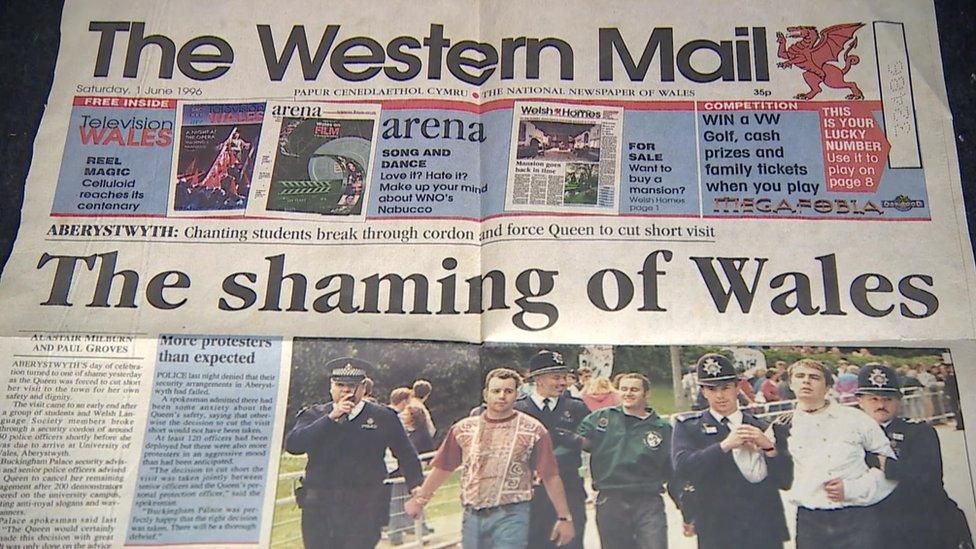
The protest from front page news the following day
Morys Gruffydd was one of the seven arrested. His picture appeared on the front of the Western Mail the following day, under the headline The Shaming of Wales.
Mr Gruffydd - who still lives in Aberystwyth - said he did not regret being part of the protest.
"I think there's pride in being part of something so big and being one of the hundreds who protested," he said.
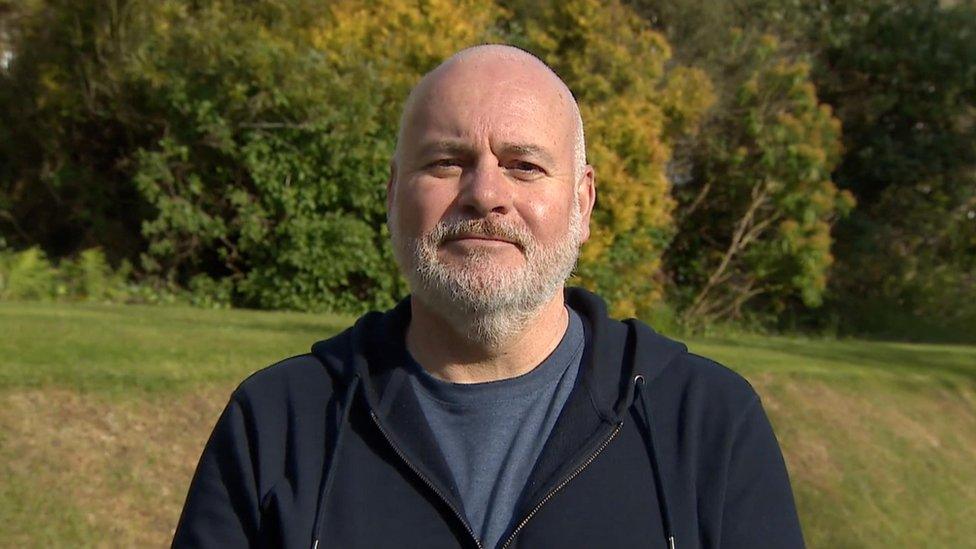
Morys Gruffydd was arrested at the protest but says he does not regret taking part
"But I think looking at it now in a wider context, it shows that non-violent protest can get things done, people listen to protesters' voices and it's nice to see protest continuing today - if it's in support of the Welsh language, BLM or Extinction Rebellion.
"It was no surprise that the alleged national newspaper used such a headline. But the biggest shame was that the Queen was invited to open one of the national institutions here in Wales," he said.
Aberystwyth's mayor in 1996, Carol Kolczak, said at the time the visit had gone well "except for the last part when she was meant to go to the college".
"The only problem I have is that this happened in Aberystwyth, and I must say that the people involved were not Aberystwyth people," she said.
"If they were students, then the people from the town feel very strongly that something must be done about it."
One Aberystwyth woman told the BBC at the time: "It's very disgusting. Would they like this wherever they come from?

The Queen continued to wave to crowds after her car swerved
After opening the extension, on the advice of her security officers the Queen did not proceed to the second part of her visit.
She had been due to open a new glaciology centre on the university campus.
But she did not complete the visit according to plan, the only time this has happened in Britain.
Some criticised the police, saying it should have been possible to ensure that the Queen could complete the visit safely.
Dyfed-Powys Police rejected criticism at the time.
In 1996 the deputy chief constable, Eifion Pritchard, said: "We've made sure the Queen is safe - she left safely and with her dignity.
"And that's more important than finishing the programme, in my opinion."
According to historian Hefin Mathias, the event in Aberystwyth in 1996 was significant for another reason too.
"There had been lots of protests in Aberystwyth in the '60s when Prince Charles was in college there and it got worse during the investiture in 1969, but on the whole the Queen was warmly welcomed to Wales normally," he said.
"So the assumption was that she would be very welcome on this occasion too.
"And she was welcomed by the people near the station when she first arrived."
But the visit "struck a chord in particular with the anti-British and anti-royal sentiments of the young people."
Mr Mathias said: "This may also reflect the fact that the people of Wales were changing, society was changing, from one that could be seen as having been maybe servile, to a much more confident society and more willing to assert its rights."
- Published21 April 2016
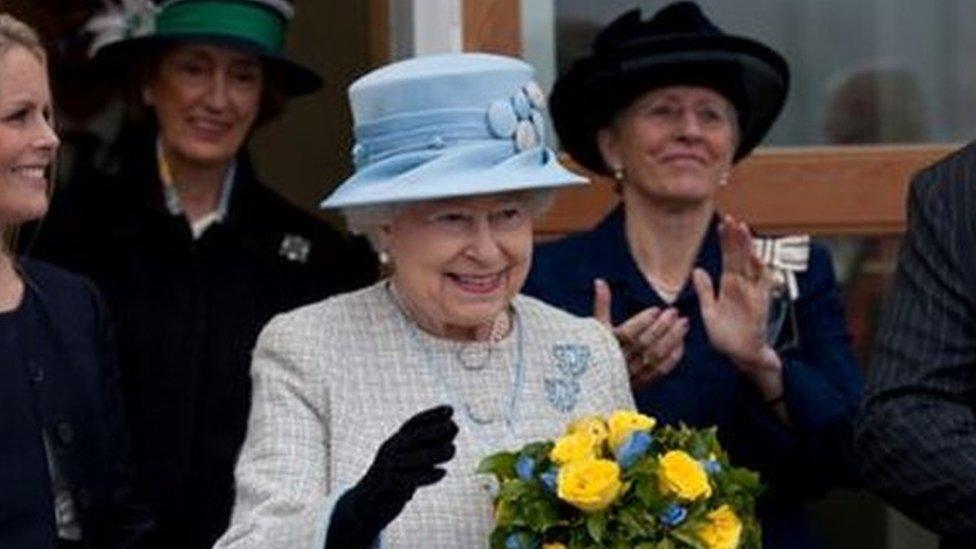
- Published18 April 2016
